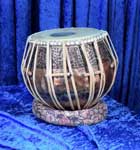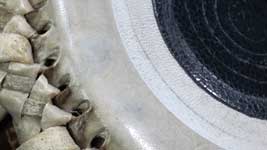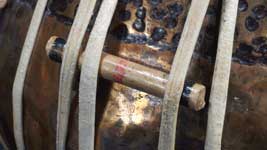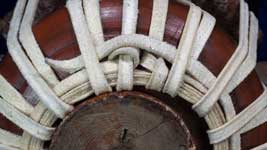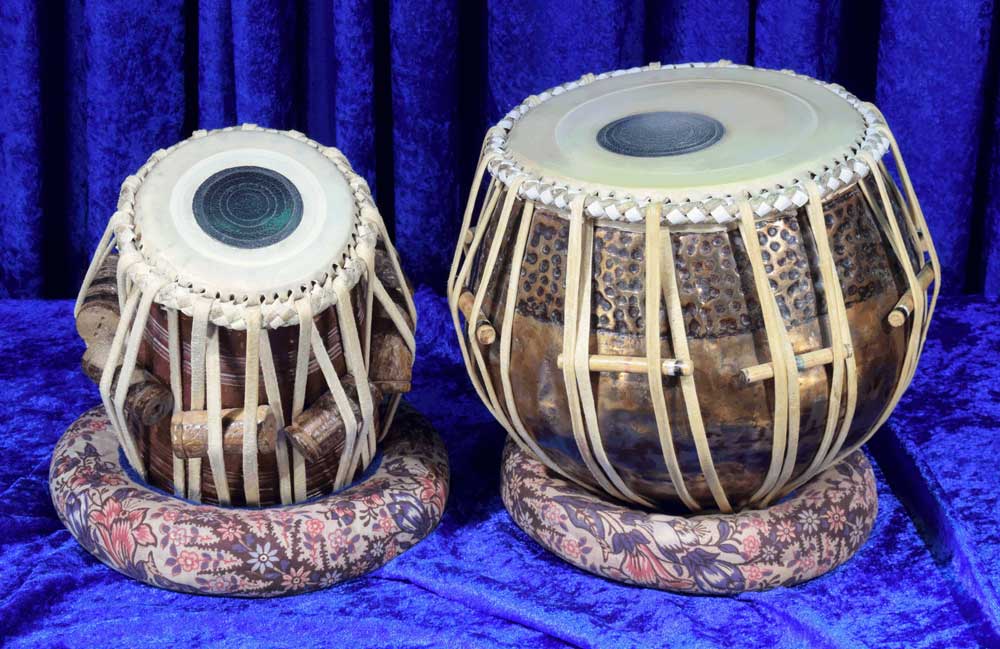
| Note This is a navigation page. From here you can navigate to a variety of pages, articles, and resources according to your interests. 1) Overview 2) Tabla Making in the Deccan 3) Basic Strokes / Bols 4) FAQs 5) Primer for Older Student 6) Tuning the Tabla 7) Repair and Maintenance 8) Psychoacoustics of Pitch 9) Pudi 10) New Approaches to Instruction 11) Mridangam and Tabla 12) Tabla and the Guitar 13) Photo Gallery 14) The Cyclic Form 15) The Cadential Form |
Overview of Tabla
Tabla is a pair of drums. It consists of of a small right hand drum called dayan and a larger metal one called bayan.
The tabla has an interesting construction. The dayan (right hand drum) is almost always made of wood. The diameter at the membrane may run from just under five inches to over six inches. The bayan (left hand drum) may be made of iron, aluminium, copper, steel, or clay; yet brass with a nickel or chrome plate is the most common material. Undoubtedly the most striking characteristic of the tabla is the large black spot on each of the playing surfaces. These black spots are a mixture of gum, soot, and iron filings. Their function is to create the bell-like timbre that is characteristic of the instrument.
Although the origin of tabla is somewhat obscure, it is generally believed that it evolved from the barrel shaped drum called pakhawaj. This was about three hundred years ago.
Photo Gallery


